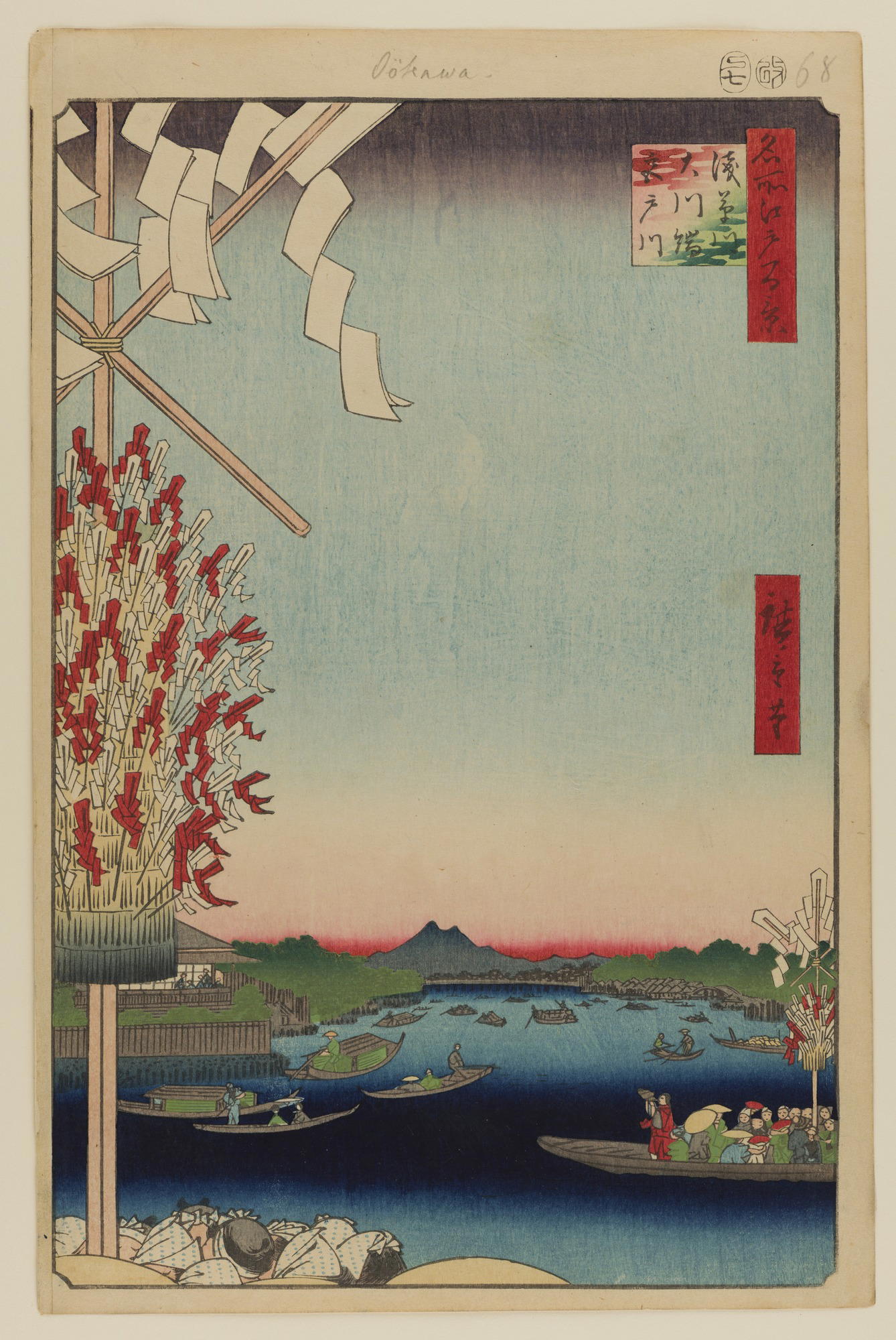Asakusa River, Great Riverbank, Miyato River, No. 60 from One Hundred Famous Views of Edo

Brooklyn Museum photograph
Object Label
The point of view here is looking north from just under Ryogoku Bridge. Hiroshige provides a characteristically indirect depiction of one of the most interesting summer customs associated with the bridge, the ablutions of the Mount Oyama pilgrims. Instead of showing the spot under the bridge where they rinsed themselves before setting out for the sacred mountain, this view features pilgrims returning from the ablution site. The bonten, or huge assemblages of ritual paper strips dominating the composition, were used by the ascetics who spread the Oyama cult. The title of the print may seem confusing, since Asakusa River, Great Riverbank, and Miyato River all refer to the same river—the Sumida.
Caption
Utagawa Hiroshige (Japanese, 1797–1858). Asakusa River, Great Riverbank, Miyato River, No. 60 from One Hundred Famous Views of Edo, 7th month of 1857. Woodblock print, Sheet: 14 5/16 x 9 5/16 in. (36.4 x 23.7 cm) Image: 13 x 8 1/2 in. (33 x 21.6 cm). Brooklyn Museum, Gift of Anna Ferris, 30.1478.60. (Photo: Brooklyn Museum)
Gallery
Not on view
Collection
Gallery
Not on view
Collection
Artist
Title
Asakusa River, Great Riverbank, Miyato River, No. 60 from One Hundred Famous Views of Edo
Date
7th month of 1857
Period
Edo Period, Ansei Era
Geography
Place made: Japan
Medium
Woodblock print
Classification
Dimensions
Sheet: 14 5/16 x 9 5/16 in. (36.4 x 23.7 cm) Image: 13 x 8 1/2 in. (33 x 21.6 cm)
Signatures
Hiroshige-ga
Markings
No publihser's seal visible, probably lost when left margin was trimmed. Date seal and censor seal in top margin.
Credit Line
Gift of Anna Ferris
Accession Number
30.1478.60
Have information?
Have information about an artwork? Contact us at